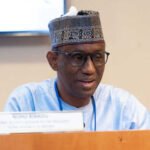Nigeria still accounts for the world’s highest number of out-of-school children, but how is the country’s government responding to basic education challenges?
Development Diaries reports that the country’s Minister of Education, Tahir Mamman, recently disclosed that President Bola Tinubu’s administration plans to commit 25 percent of the nation’s budget to education.
The minister also disclosed that the education sector’s roadmap would soon be released, with a focus on basic education, out-of-school children, and adolescent girls who need to be trained and empowered.
‘Our focus is shifting to basic education, out-of-school children, adolescent girls who need to be trained and empowered’, Mamman is quoted as saying.
‘Our government is ready to commit 25 percent of the budget to education, all the President needs, according to him, are policies that will justify that budget and that is what we are working on’.
While these comments elicit hope for Nigeria’s education system, the government must be reminded of the extent of the problem at hand, and the urgency needed to fix it.
Nigeria pledged in 2015 to ‘ensure inclusive and equitable quality education and promote lifelong learning opportunities for all’ by 2030.
The country is, however, unlikely to meet this goal based on its existing low funding for basic education. One of the most pressing issues is the chronic underfunding of the sector. Inadequate financial resources hinder the provision of quality infrastructure, materials, and well-trained teachers.
Another significant challenge is the poor state of infrastructure in many Nigerian schools. Inadequate classrooms, outdated teaching materials, and a lack of basic amenities like clean water and sanitation facilities create an uncomfortable learning environment.
Students find themselves in overcrowded classrooms and often struggle to focus, which hampers the quality of education they receive.
Also, the lack of qualified educators in the system impacts the quality of education and results in a high student-to-teacher ratio.
Insecurity is another problem. This not only disrupts the learning process but also instills fear in communities, leading to further difficulties in promoting education.
These are reminders to the education minister of the extent of work that lies ahead. The majority of these problems will be achieved with increased funding for the sector.
The state governments are also not left out, as they are key to solving the problems in the sector, starting from increasing education funding in their various states.
Development Diaries calls on the minister to ensure that 12 years of free and compulsory education, an increase in the national budget for education, and safe schools for children are encapsulated in the awaited education sector roadmap.
Photo source: World Bank





